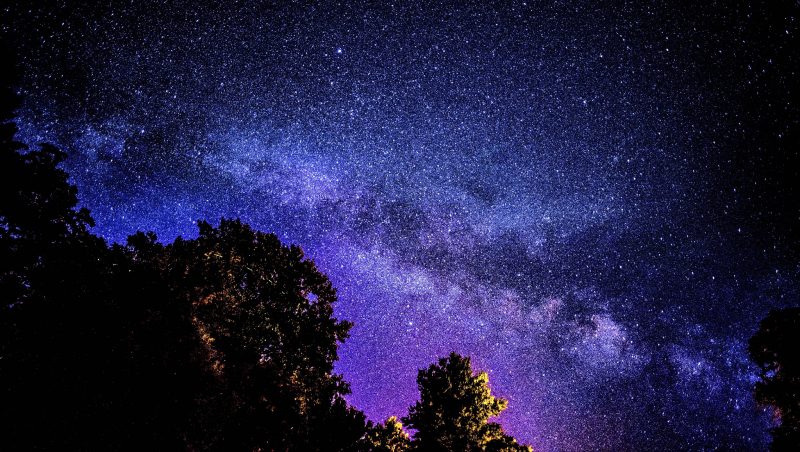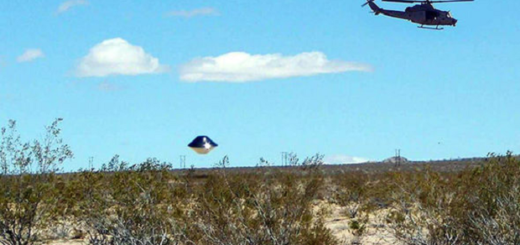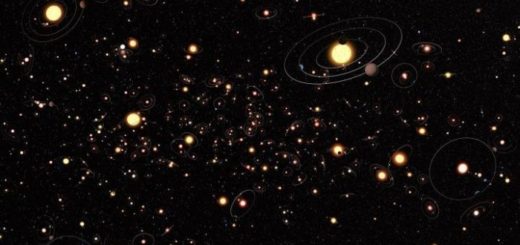Dark Rift In The Milky Way

Have you ever looked up from a dark place on a starry July or August evening and noticed the dark areas in the Milky Way? For centuries, skywatchers pondered this Great Rift or Dark Rift, as it’s called, but today’s astronomers know it consists of dark, obscuring dust in the disk of our Milky Way galaxy.
How can you see it? It’s best to wait until the moon is gone from your night sky, as it will be around late July and early August 2019. Under a dark sky, far from city lights, the Milky Way is easy to see at this time of year. It’s a shining band stretching across the sky. If you want to see the Dark Rift, that’s easy, too, as long as you realize you aren’t looking for a bright object. You’re looking instead for dark lanes of dust running the length of the starlit Milky Way band.
Chart with large Triangle to upper left, little Teapot to lower right, divided Milky Way.
The Great Rift – also known as the Dark Rift – and the Milky Way pass through the Summer Triangle and above the Teapot asterism in Sagittarius
You can see the Milky Way most easily in the evening from around June or July through about October. From a Northern Hemisphere location, you’ll see the thickest part of the Milky Way above the southern horizon. From the Southern Hemisphere, the thickest part of the Milky Way appears more overhead. Notice that the Milky Way band looks milky white. The skies aren’t really black like ink between stars in the Milky Way. You’ll know when you see the Dark Rift, because it is as if someone took a marker and colored parts of the Milky Way darker.
The Dark Rift begins just above the constellation Sagittarius the Archer. Follow the Milky Way up until you see a black area in the Milky Way just before you get to the constellation Cygnus, which has the shape of a cross. Deneb is the brightest star in Cygnus; it’s part of the famous Summer Triangle asterism. You can see the Dark Rift inside the Summer Triangle.
Be sure to keep your binoculars handy for any Milky Way viewing session. There are many interesting star-forming regions, star clusters and millions of stars that will capture your attention.
Brilliant colorful long exposure Milky Way above lake with Rift prominent.
Photo via Manish Mamtani.
The Dark Rift is dark due to dust. Stars are formed from great clouds of gas and dust in our Milky Way galaxy and other galaxies. When we look up at the starry band of the Milky Way and see the Dark Rift, we are looking into our galaxy’s star-forming regions. Imagine the vast number of new stars that will emerge, in time, from these clouds of dust!
Oval with irregular stripe, dark in middle, with blue arc lines above and below.
Shown is the interaction between interstellar dust in the Milky Way and the structure of our galaxy’s magnetic field, as detected by ESA’s Planck satellite over the entire sky. Image via ESA on Pinterest.
Ancient cultures focused on the dark areas, not the light areas. You know those paintings where if you look at the light areas you see one thing, but in the dark areas you see something else?
The Dark Rift is a bit like that. A few ancient cultures in Central and South America saw the dark areas of the Milky Way as constellations. These dark constellations had a variety of myths associated with them. For example, one important dark constellation was Yacana the Llama. It rises above Cuzco, the ancient city of the Incas, every year in November.
By the way, the other famous area of the sky that is obscured by molecular dust is visible from the Southern Hemisphere. It’s the famous Coalsack Nebula near the Southern Cross, also known as the constellation Crux. The Coalsack is another region of star-forming activity in our night sky – much like the Dark Rift.
Milky Way dark areas labeled Shepherd, Fox, Baby Llama, Llama, Partridge, Toad, Serpent.
This painting shows some of the animal shapes that the Incas saw in the Dark Rift of the Milky Way. Image via Coricancha Sun Temple in Cusco/Futurism.
Bottom line: On a late July or August evening, looking edgewise into our galaxy’s disk, you’ll notice a long, dark lane dividing the bright starry band of the Milky Way. This so-called Dark Rift or Great Rift is a place where new stars are forming.



 Creators of mankind
Creators of mankind Description of “Tall white aliens”
Description of “Tall white aliens” Where they came from?
Where they came from? About hostile civilizations
About hostile civilizations The war for the Earth
The war for the Earth “Tall white aliens” about eternal life
“Tall white aliens” about eternal life Video: “Nordic aliens”
Video: “Nordic aliens” Aliens
Aliens Alien encounters
Alien encounters The aliens base
The aliens base UFO
UFO Technology UFO
Technology UFO Underground civilization
Underground civilization Ancient alien artifacts
Ancient alien artifacts Military and UFO
Military and UFO Mysteries and hypotheses
Mysteries and hypotheses Scientific facts
Scientific facts


















